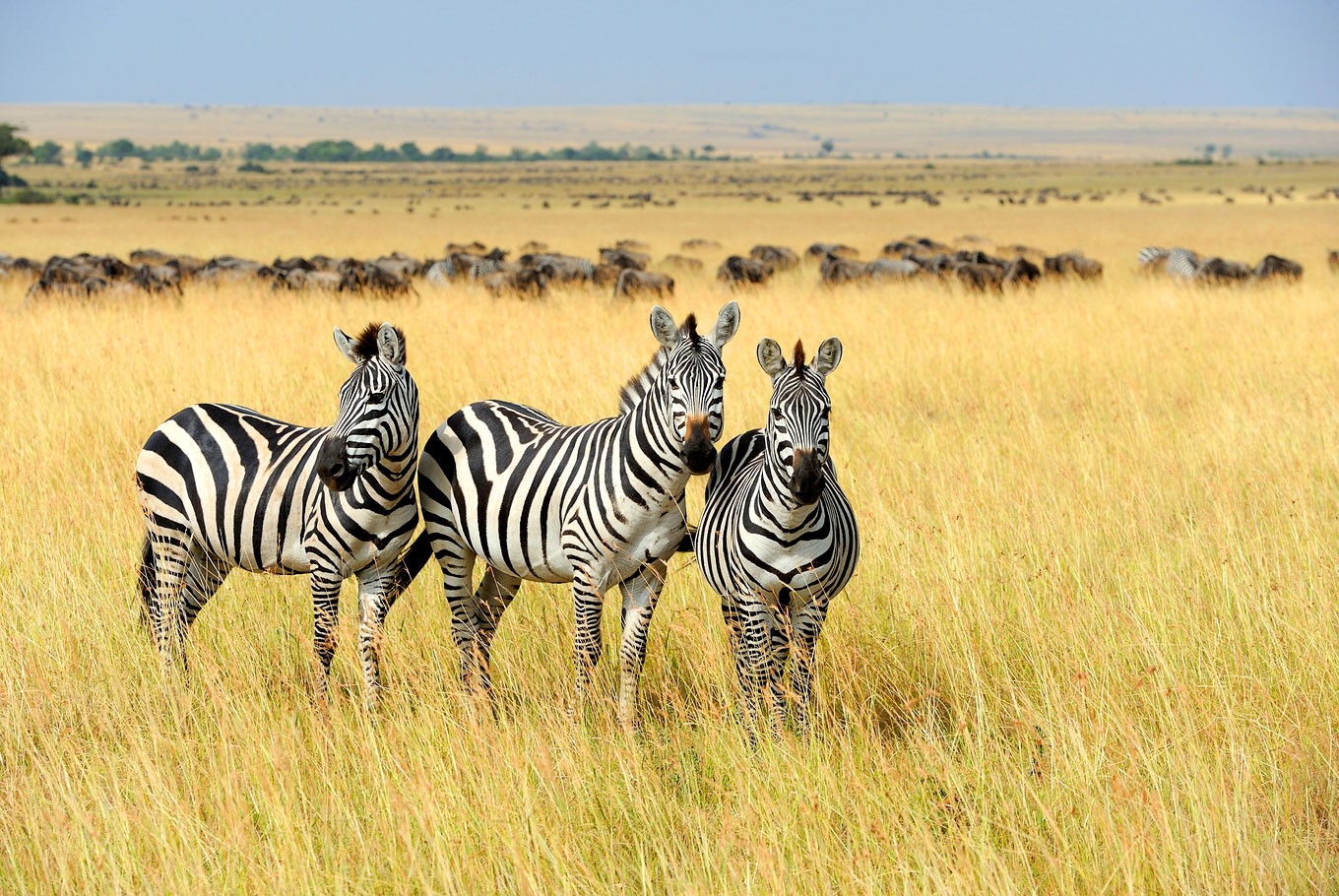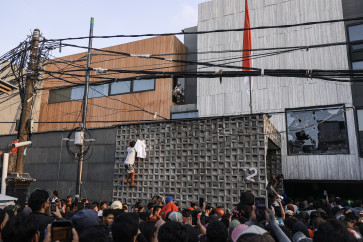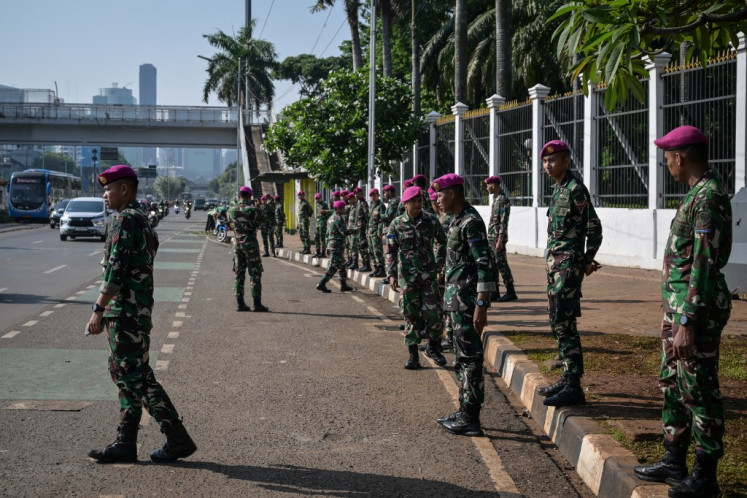Popular Reads
Top Results
Can't find what you're looking for?
View all search resultsPopular Reads
Top Results
Can't find what you're looking for?
View all search resultsTraversing the wild and wonderful safari capital of the world
Change text size
Gift Premium Articles
to Anyone
T
he thrill of guessing, chasing and going through the long hit-and-miss game drives through the savannas of Kenya was a lifetime experience. Learning about the habits and habitats of many rare species of animals and birds, especially at this time when so many species are becoming endangered, was enlightening. It reminded us of how the law of nature keeps our bio-world going, a lesson that was learned through textbooks years ago.
Long game drives in Combis (open roof vans), chance encounters with the wild in their natural habitats, beautiful sunrises and sunsets at the savannahs and the hills, the view of the innocent being preyed on by the shrewd big cats, the amazingly long necks of the giraffes, well designed patterns on strong zebras and numerous varieties of birds were all part of our week-long trip through this east African region. Not to forget its equally interesting human tribes (42) that have adapted to blend in with and survive in these surroundings. They are naturally kind and accommodating while being tough and strong, knowing how to survive with the bare minimum in any given condition.
 Close encounters at Masai Mara, Kenya.(JP/Anand & Madhura Katti)
Close encounters at Masai Mara, Kenya.(JP/Anand & Madhura Katti)
Kenya has a great variety of its wildlife, especially the big game, associated with the African savannas. The major species are the elephant, the rhinoceros, the wild buffalo, the giraffe and the lion, called the Big Five. Added to these are three different species of deer, zebras and thousands of strange looking wildebeests that make a spectacular sight during their annual migration of many miles in search of food. Most of these are protected in national parks and game preserves to protect them from hunters, who have severely reduced the number of large mammals, such as the elephant and the rhinoceros. Kenya abounds in birds and reptiles, the latter including the python and the cobra.
(Read also: One step from extinction)
 Chimpanzee rehabilitation centre, Nanyuki, Kenya.(JP/Anand & Madhura Katti)
Chimpanzee rehabilitation centre, Nanyuki, Kenya.(JP/Anand & Madhura Katti)
Nairobi, the capital of Kenya, is also the main gateway for those visiting the country for game safaris. It is also a second home to many wild life photographers and videographers. Watching the game meat barbecued on Masaai swords and cut directly on the plate at the table was a chilling experience during dinner at the Carnivore restaurant on the outskirts of Nairobi. Surprisingly, it had an elaborate vegetarian spread for those who weren’t game to eat the game that they had come to watch. The meat of zebra, crocodile, wild goose and many more whetted the appetite of other gourmets.
 Dawa mixer at the Carnivore.(JP/Anand & Madhura Katti)
Dawa mixer at the Carnivore.(JP/Anand & Madhura Katti)
A brief stop at a Masaai market on our way to the Masaai Mara game reserve the next morning revealed colorful kiondo (traditional hand woven bags) and bead jewelry. The weekly street-side market held every Tuesday gathers a few hundred sellers of Masaai art and crafts from around the capital.
We drove for four hours from Nairobi to reach the Sarova Mara tented lodge in the Mara reserve. There was another shopping opportunity when we stopped to buy entrance tickets to the reserve. A group of traditionally dressed Masaai women from nearby camps gathered around our van to sell neatly crafted wooden giraffes and jewelry made of beads. After freshening up in our tented accommodation with all the modern amenities inside the zipped entrance, it was time to leave for an exciting game drive.
(Read also: Historic areas in Singapore you must visit)
 Masai dance.(JP/Anand & Madhura Katti)
Masai dance.(JP/Anand & Madhura Katti)
There are 42 different ethnic groups in Kenya. The Masaai are one of the major tribes that has its own unique traditions and culture. The Masaai are nomads who move in groups of 30 to 50 people along with their large cattle herds. They build mud huts, with each one compactly self-contained with living and cooking space besides accommodating the cattle. The Masaai eat beef and mutton from their own livestock and drink cattle blood mixed with milk when low on nutrition. After taking blood from a vein in a cow's neck, they stop the flow using a traditional herb and wait until that particular cow has recovered its blood level for the next time. They mark the cow and take another cows’ blood in the meantime.
Our game scout took us through the savanna in an open-roof, four-wheel-drive vehicle following tracks made by many vehicles. Savannas are long stretches of land marked by low level flora, mostly wild grass, and make for good viewing of the animals. Animals are most active during the early morning and late afternoon and these are the right times to go on a safari. Extensive tracts of savanna interspersed with groves of acacia and papyrus characterize the terrain. A giraffe towered over zebras on the savanna. Tourists can observe and photograph the animals during safaris that take them on the marked paths through the parks and preserves.
Night falls quickly in the tropics and as the temperature drops, the campfire becomes the focus of a safari. Insects and hyenas provide background music, while the night sky is a symphony of stars. The luxury tented camp within the game reserve kept the tempo of our adventure going.
 Kenya has a great variety of its wildlife, especially the big game, associated with the African savannas.(Shutterstock/File)
Kenya has a great variety of its wildlife, especially the big game, associated with the African savannas.(Shutterstock/File)
Kenya has an amazing wealth of bird life and we got to see many bird species. Many migratory birds are also spotted here. According to our guide, more than 6 million birds migrate to Kenya during winter in the Northern Hemisphere. These migratory birds along with the local species of birds make Kenya an ornithological paradise.
Lake Nakuru National Park, owned by the international community led by the World Wildlife Fund for Nature (WWF), is the most visited national park in Kenya. The 54-kilometer circumference saltwater lake here is well suited for flamingos that come here in the millions -- up to 2 million during peak season. These birds, which make the lake look pink with their color during the day, migrate in the evening to a lake in Tanzania, only to return the next morning.
(Read also: Palawan: Slender paradise with sweet bounty)
 Lake Nakuru National Park, owned by the international community led by the World Wildlife Fund for Nature (WWF), is the most visited national park in Kenya.(Shutterstock/File)
Lake Nakuru National Park, owned by the international community led by the World Wildlife Fund for Nature (WWF), is the most visited national park in Kenya.(Shutterstock/File)
The most astonishing view of the park for us was a dark and slimy python eating a delicate white Pelican. The big snake had just caught the fully grown pelican at the stream where it had come to for fresh water. It was nerve-chilling to see the reptile entwining itself around the poor creature. Our driver guide said that it would be just a snack for the python and that it would take two to three days to digest the entire bird, including the feathers and the wings, and it would seek prey again only after that. We also saw white rhino (introduced here from South Africa), black rhino, a native leopard in a tree, buffaloes and antelopes at close range here. Baboons that kept digging for food in the lawn at the hotel looked cute. The rhino sanctuary here has helped the endangered animal expand to 137 in number in both the black and white variety. About 450 varieties of birds are found here.
The Sarova Lion hill Lodge offers beautiful views of the lake and the flamingos any time during your stay. It is pleasant to sit on the open verandah of your comfortable cottage and gaze at the birds and animals through binoculars. Since it is owned by Indians, the hotel offers very good Indian food.
Kenya is the most diverse with the greatest variety (in 59 wildlife parks) and concentration of wild animals and birds. No wonder then that this land of the safari is a favorite with presidents, royalty, celebrities and millions of tourists from around the world, who first came to Kenya to hunt, but who now, with hunting being outlawed since 1977, come to watch the wild in their natural habitats with the sights, sounds and smells of ageless Africa.
***
Anand & Madhura Katti (husband & wife team) are award winning travel journalists based in Mumbai, India. They travel across the country and the world, attending many travel trade, hotel industry summits, and conferences. They also have contributed to many Indian newspapers and some overseas publications for 26 years. Writers can be contacted at abkatti@gmail.com.
---------------
Interested to write for thejakartapost.com? We are looking for information and opinions from experts in a variety of fields or others with appropriate writing skills. The content must be original on the following topics: lifestyle ( beauty, fashion, food ), entertainment, science & technology, health, parenting, social media, and sports. Send your piece to community@jakpost.com. For more information click here.







